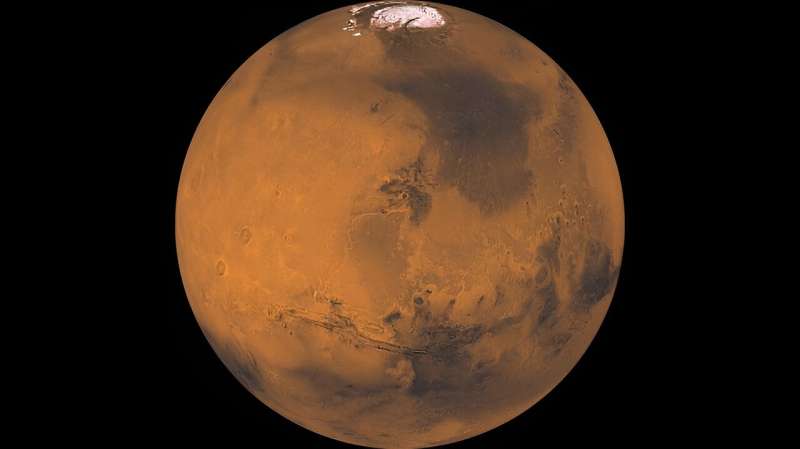The polar caps on Mars have amazing spiral structures on their surface. Scientists have recently studied them to find out about their formation by winds. At the same time, they have learned a lot about how the climate of the red planet has changed over the past million years.

Exploring the polar caps on Mars
An article recently appeared in the Journal of Geophysical Research: Planets on the polar caps on Mars. Its authors examined spiral patterns on Mars’ polar caps and concluded that the planet’s climate has undergone rapid changes over the past million years.
Anyone who has ever seen photos of Mars’ polar caps wonders about the incredible spiral patterns that cover them. The authors of the new study were no exception in their time. After all, you won’t see anything like this anywhere else on Earth.
However, scientists figured out quite some time ago that these patterns are actually made up of layers of ice and dust that are 400 to 1000 meters thick. The latter is the result of local erosion caused by so-called katabatic winds. These air currents first move rapidly, tearing particles out of the rocks, and then, just in the same rapid manner, they weaken, and the dust settles to the surface.
Mars climate change
In a new study, scientists examined images of Mars’ ice caps in detail to test this theory. The assumption about katabatic winds suggests that the walls of the dust-filled furrows on them should be asymmetrical. And in 80 percent of cases, this turned out to be true.
20% of the furrows are symmetrical, which means that some other, more intensive processes are responsible for their formation. In addition, no dust clouds that should be there are not observed. All this led scientists to conclude that they were formed some time ago.
Summarizing the data allowed to learn a bit more about the history of the red planet. Researchers have suggested that 4-5 million years ago, that is relatively recent by the standards of the Solar System, the climate of Mars significantly changed, which made its atmosphere and hydrosphere to work in a new way.
This is very important information, because for future colonization of the planet, people will need to extract water there, and it may be stored in its depths. However, to say how the new data will affect the search for ice deposits on it scientists can not yet say.
According to phys.org


